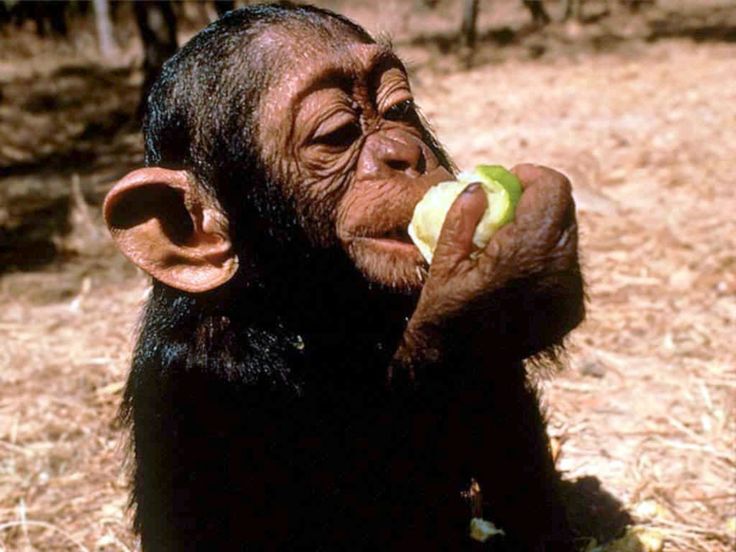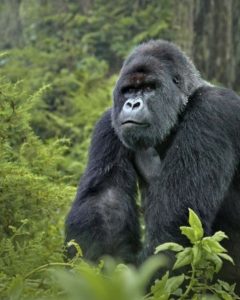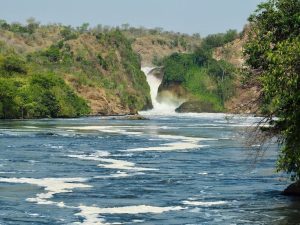Kanyanchu, located in the heart of Kibale National Park in western Uganda, is one of the most popular chimpanzee trekking destinations in Africa. The area is renowned for its dense tropical rainforest, rich biodiversity, and habituated chimpanzee communities that provide visitors with unforgettable wildlife experiences. This guide covers everything you need to know about chimpanzee trekking in Kanyanchu, from logistics and safety to what to expect during your trek.
What Is Chimpanzee Trekking in Kanyanchu Like?
Chimpanzee trekking in Kanyanchu involves guided walks through the lush forests of Kibale National Park to locate and observe wild chimpanzees in their natural habitat. The treks are designed to provide close, safe, and non-intrusive encounters. Trekkers follow trained guides and rangers who have detailed knowledge of chimpanzee movement patterns and forest trails. A typical trek includes hiking through uneven terrain, spotting other wildlife such as red colobus monkeys and various bird species, and observing chimpanzees as they forage, play, and interact socially. The experience can last anywhere from two to five hours depending on the location of the chimpanzees and the pace of the group.
How Safe Is Chimpanzee Trekking in Kanyanchu?
Chimpanzee trekking in Kanyanchu is very safe when conducted according to park regulations. All treks are led by trained guides and rangers who ensure that visitors maintain a safe distance from the chimpanzees typically at least seven meters. The chimpanzees in Kanyanchu are habituated, meaning they are accustomed to human presence and rarely exhibit aggressive behavior when proper protocols are followed. Safety is further enhanced by strict rules on hygiene, such as avoiding trekking if ill and using hand sanitizers, to prevent disease transmission between humans and chimpanzees. The combination of trained staff, controlled group sizes, and visitor guidelines makes trekking a secure activity for all participants.
How Do I Get to Kanyanchu for Chimpanzee Trekking?
Kanyanchu is located within Kibale National Park, approximately 350 kilometers west of Kampala, Uganda’s capital. The park is accessible by road, with private vehicles or tour operators providing transport. From Kampala, the journey usually takes around 5 to 6 hours via Fort Portal, the nearest major town. Visitors traveling from Kigali, Rwanda, or Kampala can also use domestic flights to Fort Portal or Kasese followed by a short drive to the park. Most safari operators include transportation in their packages to ensure safety and convenience.
What Is the Best Time of Year for Chimpanzee Trekking in Kanyanchu?
The best time for chimpanzee trekking in Kanyanchu is during the dry seasons: December to February and June to August. During these months, trails are less muddy, the forest is easier to navigate, and the likelihood of spotting chimpanzees is higher because they are more active on the forest floor. The rainy seasons, March to May and September to November, can make trekking challenging due to slippery trails and dense vegetation. However, the forest remains green and vibrant, and some visitors prefer the wet season for birdwatching and lush scenery. Regardless of the season, guided treks remain safe and well-organized.
What Should I Wear for Chimpanzee Trekking in Kanyanchu?
Proper clothing is essential for a comfortable and safe trek. Visitors are advised to wear lightweight, breathable clothing that covers arms and legs to protect against insects and vegetation. Hiking boots or sturdy shoes with good grip are necessary for muddy or uneven terrain. A hat, sunglasses, and sunscreen protect against sun exposure, while rain jackets are useful during the wet season. Gloves can also be worn to navigate through dense foliage. Dressing appropriately ensures comfort and minimizes risks during trekking.
How Long Does a Chimpanzee Trek in Kanyanchu Take?
A chimpanzee trek typically lasts between 2 to 5 hours, depending on where the chimpanzees are located within the forest. The trek begins at the Kanyanchu headquarters, where visitors receive a briefing on safety rules and chimpanzee behavior. From there, the guide leads the group along forest trails, pointing out other wildlife and unique flora. Once the chimpanzees are located, trekkers spend about one hour observing them from a safe distance. Afterward, the group returns to the starting point. The total time can vary based on forest conditions and chimpanzee activity, but guides ensure the experience is manageable for most participants.
Are Children Allowed on Chimpanzee Treks in Kanyanchu?
Children above the age of 12 are usually allowed to participate in chimpanzee trekking, though park regulations may vary slightly. Trekking requires walking through uneven terrain and following strict rules, so younger children may not meet the physical or behavioral requirements. Parents or guardians should ensure that children can maintain discipline during the trek, including keeping a safe distance from the chimpanzees and following guide instructions. Some operators provide family-friendly options or alternative activities for younger children.
How Close Can You Get to Chimpanzees During a Trek?
Visitors must maintain a minimum distance of seven meters from chimpanzees. This rule is critical for preventing disease transmission and minimizing stress for the animals. Guides and rangers strictly enforce this guideline, and tourists are instructed not to approach, touch, or feed the chimpanzees. Despite the distance, the trekkers often observe chimpanzees engaging in natural behaviors such as grooming, playing, and foraging, providing excellent photo opportunities while ensuring safety for both humans and wildlife.
Are Guides and Rangers Required for Chimpanzee Trekking?
Yes. All chimpanzee treks in Kanyanchu are conducted with professional guides and rangers. Guides provide insight into chimpanzee behavior, forest ecology, and trail navigation. Rangers, sometimes armed, ensure safety and prevent unauthorized access to sensitive areas. The presence of guides and rangers guarantees that the trek is both educational and secure. Solo trekking is not permitted under park regulations, reinforcing the safety and conservation standards.
What Wildlife Besides Chimpanzees Can I See in Kanyanchu?
Kanyanchu is home to a wide array of wildlife. Besides chimpanzees, trekkers may spot:
-
Red colobus monkeys – one of the rarest primates in Africa.
-
Black-and-white colobus monkeys – agile and easily spotted in the canopy.
-
Bushbucks, duikers, and forest elephants – occasionally encountered on forest trails.
-
Over 300 species of birds – including the African green broadbill, blue-headed bee-eater, and the African pitta.
The diverse wildlife makes Kanyanchu a full eco-tourism experience, appealing to both primate enthusiasts and nature lovers.
What Are the Costs of Chimpanzee Trekking in Kanyanchu?
Chimpanzee trekking permits vary by nationality:
-
Ugandan residents: approximately 50,000 – 100,000 UGX.
-
East African residents: around 100 – 150 USD.
-
International visitors: 150 USD per trek.
These fees support park conservation, research, and local community programs. Additional costs may include park entrance fees, guide tips, and transportation to Kanyanchu. Booking in advance is recommended, especially during peak tourist seasons, to secure permits and availability.
Can I Combine Chimpanzee Trekking with Gorilla Trekking in Uganda?
Yes. Many travelers combine chimpanzee trekking in Kibale National Park with gorilla trekking in Bwindi Impenetrable or Mgahinga National Parks. Uganda’s well-established tour operators offer packages that cover transportation, accommodations, and guided experiences for both activities. Combining chimpanzee and gorilla trekking provides a comprehensive primate-focused safari experience while maintaining high safety and logistical support throughout the trip.
Are There Accommodations Near Kanyanchu for Overnight Stays?
Yes. Several lodges, camps, and guesthouses are located near Kanyanchu and Kibale National Park. Options range from luxury lodges with modern amenities to eco-friendly campsites for budget travelers. Staying nearby allows for early morning treks, which is the best time for chimpanzee sightings, and minimizes travel fatigue. Many lodges also provide guides, meals, and additional safari activities, making them convenient bases for wildlife exploration.
Do I Need Travel Insurance for Chimpanzee Trekking in Kanyanchu?
Yes, travel insurance is strongly recommended. Trekking involves walking through uneven terrain and remote forest areas, which carries a risk of minor injuries, insect bites, or unexpected emergencies. Comprehensive travel insurance should cover medical emergencies, evacuation, trip cancellations, and lost baggage. Many tour operators require proof of insurance before issuing trekking permits, ensuring both visitor safety and financial protection.
How Physically Challenging Is Chimpanzee Trekking in Kibale National Park?
Chimpanzee trekking is moderately challenging. Trails can be steep, muddy, or uneven, requiring a reasonable level of fitness. Trekkers may encounter dense vegetation and must navigate natural obstacles such as roots, rocks, and streams. However, guides pace the trek according to the group’s ability, and porters are available to assist with bags or support. Most tourists with basic fitness levels can complete the trek successfully, making it accessible to a wide range of visitors.
Chimpanzee Trekking in Kanyanchu Is Safe and Rewarding
Chimpanzee trekking in Kanyanchu provides a safe, well-regulated, and unforgettable wildlife experience. With strict park rules, trained guides, habituated chimpanzee communities, and diverse wildlife, tourists can enjoy close encounters with primates in their natural habitat. By following safety protocols, preparing adequately, and respecting the environment, visitors can explore one of Uganda’s most iconic ecological treasures with confidence and comfort.




